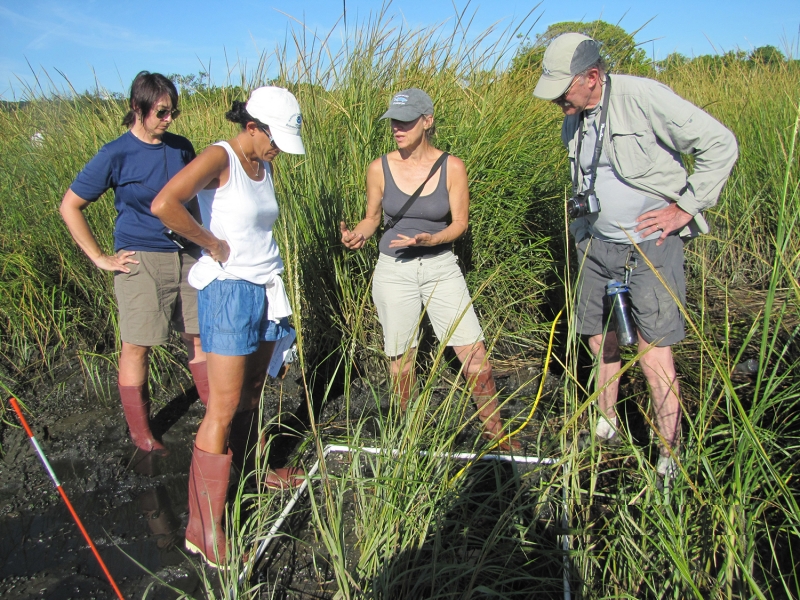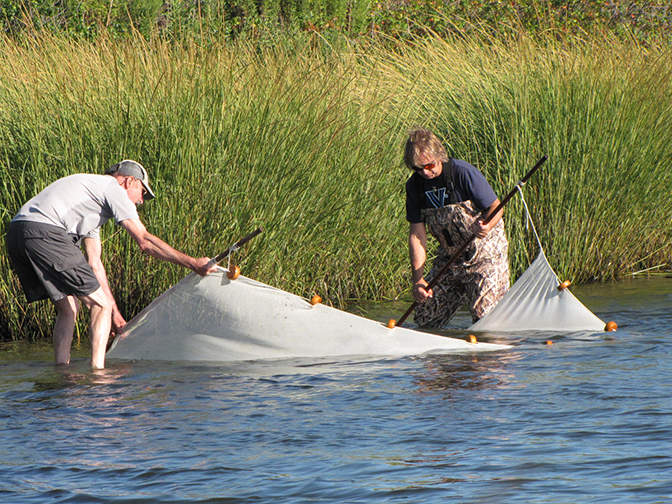
There is no one-size-fits-all approach to environmental assessments for oil spills or hazardous waste events. We must therefore custom-tailor our technical approach for each pollution incident.
We first determine whether impacts to natural resources have occurred and whether it is appropriate to proceed with a Natural Resource Damage Assessment (NRDA). We collect time-sensitive data, evaluate available research and information about the type of injury, and determine what species and habitats are likely to have been affected. If we determine that habitats, wildlife or human uses have been harmed or could experience significant impacts, we often proceed with a full damage assessment.
This type of scientific assessment is particularly challenging in a marsh environment given potential injury due to both oil persistence and toxicity. For example, a home heating oil released by the North Cape barge in 1996 caused acute injury to lobsters, clams, fish, crabs, and mussels in, and adjacent to, the marshes of southern Rhode Island. The light oil was highly toxic, but quickly dissipated, thereby causing a lot of immediate injury, but less long-term problems. By contrast, a more chronic impact was the result of persistent fuel oil released by the Barge Bouchard 120 in the salt marshes of Massachusetts in 2003. That oil saturated 100 miles of shoreline, impacting tidal marshes, mudflats, beaches, and rocky shorelines. These evolving factors are why we constantly share best practices and lessons learned among our colleagues in the northeast and nationwide.
Members of the Northeast and Spatial Data Branch of NOAA’s Office of Response and Restoration and NOAA’s Restoration Center recently met at Spermaceti Cove, Sandy Hook, New Jersey, to participate in a hands-on workshop to improve our salt marsh damage assessment techniques and data compilation.
They were building on previous findings presented at a 2015 salt marsh assessment workshop in Massachusetts, that information learned there should be shared in other locales. Of note were the variety of vegetation and native invertebrates around the coastal United States that necessitate region-specific marsh field training.

To address the study of natural resource damages in a mid-north Atlantic salt marsh environ, this 2016 effort included the count of flora and fauna species within a 2 meter square quadrant along a designated transect (see photo) to provide a measure of diversity and species richness. Also they used a seine, a lift net, and minnow traps to collect fish adjacent to the marsh for species identification and to measure body size and observe possible abnormalities, both external and internal.
Additionally, NOAA scientists discussed and demonstrated current best practices to perform our work regarding health and safety, sample custody, and data management.
In an actual future marsh injury assessment, the Trustees would develop a conceptual site model for guidance in testing the hypotheses, the specific study design, and the proper site and habitat injury measures.
Ken Finkelstein and Kathleen Goggin of NOAA’s Office of Response and Restoration contributed to this article.
